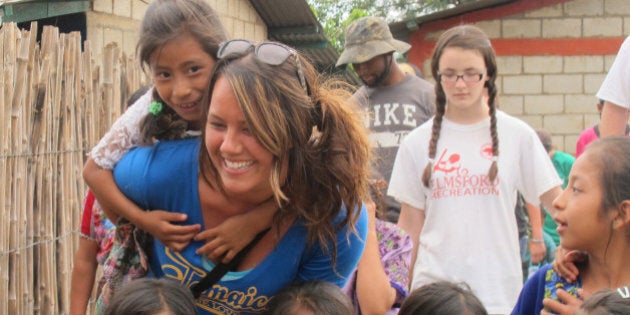
In 2013, armed with nothing more than good intentions and a need to 'give back' because of my own middle-class privilege, I 'voluntoured' at an education centre in East Bali for a month.
Voluntourism, the portmanteau of volunteering and tourism, has become a rite of passage for people who want to do something more meaningful with their holidays than laze by the pool. In fact, there is an entire industry that supports this interest and it is worth about US$170 billion annually.
It started as a competition among not-for-profit centres, as they balanced their original philanthropic goals with new methods of remaining financially viable. One of the ways to keep cost low and promote their cause is to recruit resources who are willing to work for free in exchange for 'work experience' on their CV.
This might explain why the centre I applied to never asked about my lack of teaching experience, lack of qualifications in teaching English as a second language or lack of security clearance to work with children. It is a stark difference from my own corporate environment, where I trained for years before my managers trusted me to maintain a financial database on my own.
That should have been the first hint that I could not possibly make a difference for these children.
Within the first few weeks, I began to realise that the volunteers' presence might actually be more damaging for the students' education. Sure, it was exciting for the students to have teachers from Spain, Romania and China because it expanded their environment and understanding of the world beyond just Bali.
But what if some of these teachers spoke neither fluent English nor Indonesian? Can the teaching and communication be effective or it is really a sham? There comes a point when communicating via sign language stops being amusing and starts becoming frustrating. The simple fact is, if we will not tolerate a monthly rotating list of inexperienced teachers in our own schools, why do we think it is acceptable for students in the developing world?
My own inexperience in teaching English as a second language was compounded by the fact that my students spoke Indonesian and Balinese, which are both simple languages. They have no past, present or future tense, no singular and plural words and are gender neutral.
Now, try teaching these students the complexities of the English language: the plural of man is men, but the plural of pan is not pen, read is both a present and past tense and let's not even go into masculine-feminine nouns. As a native English speaker, I never thought of these oddities until I had to explain it to 10-year-olds and I did not have a better explanation than "that's just how it is".
Beyond the language is the ability to adapt education to fit local culture. Many education centres design a syllabus according to the students' needs, and volunteers try to complement this by bringing along educational books from their home country. Perhaps they mean well, but a textbook from the UK is not easily adaptable to a Balinese classroom. It is almost comical to watch volunteers describe fruits such as blackberry, squash and zucchini to a classroom of kids who are more familiar with watermelon, honeydew and kangkung. It shows a complete lack of understanding of both local context and local produce.
This problem is not unique to the education sector of voluntourism -- it extends to construction, infrastructure development and healthcare. The often-used example about unsustainable initiatives is the PlayPump, a merry-go-round pump that produces safe drinking water. Initially, it was lauded as the creative answer to the developing world's water woes, but by 2007, one-quarter of the pumps in Zambia alone were in disrepair. It was later estimated that children would need to 'play' for 27 hours a day to produce the water the PlayPump promised.
To put it bluntly, I, like many others before me, were exactly what Pulp sang about in their song 'Common People', which mocked middle-class folks as they engaged in class tourism. I wanted to live like 'common people', I wanted to do whatever 'common people' do. I latched on to the patronising and dangerously simple concept of 'saving the world' by parachuting into a new environment that I knew very little about and assuming I could solve their decades-old problems instantly.
My takeaway is that voluntourism romanticises poverty.Think about the photos on your social media feed where your friends are pictured teaching a classroom of kids or kicking a football with giggly children. The hardships and difficulties in developing countries are problems that should ideally be fixed, but the people and the environment have become photo opportunities framed in 'exotic otherness'.
When did people become props in our do-good lives, and why do we not call it out?